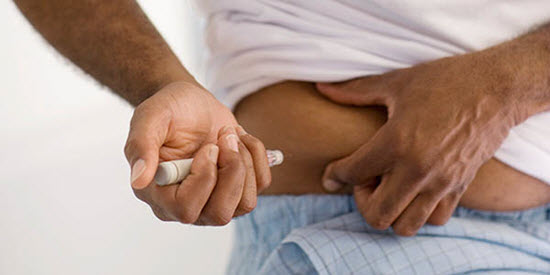
Type 2 diabetes is epidemic in this country, and typically begins with insulin resistance.
What we usually read or hear about insulin resistance is that it”™s a result of overweight/obesity. This is not always the case, since the reverse can be true. Insulin resistance (IR) may actually cause overweight. What”™s important to remember is that no matter which comes first — IR or overweight — the metabolic consequences are exactly the same.
This post is on the role that dietary sugar and fructose can play in causing insulin resistance, and the ways in which that can happen. IR appears to result from changes in both receptor number and receptor activity or sensitivity.
A high-carbohydrate diet can lead to IR, particularly if the carbs are high on the glycemic index. Sugar would be a prime example of a high-glycemic carb. High-glycemic carbs are quickly absorbed and trigger a high insulin response. The high levels of insulin secretion can in turn lead to a diminished response by the body to insulin, due to something known as “down-regulation”. Down-regulation is a term originally borrowed from brain chemistry research. It refers to a reduction in both the number of insulin receptors and the sensitivity of the receptors. The changes mean that whatever insulin is available no longer works as well as it did before.
Down-regulation is even more likely to occur for someone who is carbohydrate sensitive. Carb sensitivity is an exaggerated insulin response to sucrose or other carbs. The possibility of down-regulation of insulin receptors is even greater with that extra-high insulin release. And down-regulation of insulin receptors occurs fairly rapidly.
So eating sugar — especially lots of sugar, as might occur with sugar addiction — can cause insulin resistance.
What about fructose?
There”™s a rather odd adaptation here. Fructose has been shown to change muscle fibers from type 1 to type 2b. Type 1 is a high-endurance fiber that responds well to insulin, while Type 2b is better for explosive power but less responsive to insulin. It has been suggested that this is the mechanism behind the well-known fact that fructose triggers IR. Yes, the original research was done on animals, but studies on human subjects have shown similar results — although training can modify the results somewhat.
The bottom line is that fructose — which, as you may recall, is half of the sucrose molecule — may cause insulin resistance in this interesting way. It might even be hypothesized that sucrose (granulated table sugar that everyone knows is junk) is capable of causing insulin resistance through both mechanisms: down-regulation of insulin receptors and modified muscle fiber type due to the fructose in it. Especially if it”™s eaten in large quantities — for example, by someone who's addicted to sugar.
Please recall that all research seems to confirm that the fructose in sucrose is what makes sucrose the junk that it is.
Healthful recommendations? Skip the sugar, definitely skip processed fructose or concentrated fruit juice used as a sweetener, and get your wholesome nutrients primarily from vegetables and only incidentally from fruit. It”™s not what you”™ll hear most places, but it may work better than what you will hear elsewhere.
- New Year’s Resolutions: A Sugar Addict’s Survival Guide - April 15, 2024
- Motivation vs. Enthusiasm - October 12, 2023
- Why Exercise Shouldn’t Be Just One Thing - November 9, 2022

Apologies for appearing to be contradictory but this over-focus on sugar (and even worse, fructose) is in many ways analogous to previous demonization of *fat*…..which’d include the *good* fats, right??
It’s important to remember a couple of things…..context and dose.
T2D/NIDDM/metabolic syndrome etc are tremendously complicated physiological disturbances that can’t rightly be addressed in a small post.
Along with an epidemic of obesity and T2D …. not just in the US but in most of the developed World … we have an epidemic of both overeating, overeating of low nutritional content foodstuffs and of misinformation. Using a pic. of insulin injection perpetuates this sensationalism.
Mind, if I could magically transform some of my type 1 muscle fibres to type 2b with nothing more strenuous than eating a few more apples and pears each day (both very high in fructose FWIW) I’d roll that way..